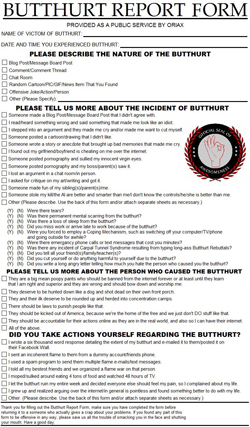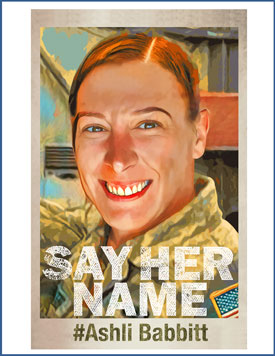Can’t remember where I ran across this one, but it’s truly fascinating stuff.
Nukes, Nubs And Coners: The Unique Social Hierarchy Aboard A Nuclear Submarine
Getting assigned to your first sub doesn’t make you a submariner and once you become one you’ll find yourself in a social structure unlike any other.Living in a machine with over 100 sailors requires a person to be flexible socially and sometimes physically. I spent two decades on United States Navy submarines performing sonar duties among eccentric personalities in incredibly stressful situations. When sailors report to their first submarine, they are joining a work culture unlike any other. Surrounded by crew members busily moving about tight spaces and narrow walkways, announcements over the circuit boxes, roving watchstanders, equipment humming to 400hz fans, it can be anxiety-inducing to any sailor.
That is why every new crewmember starts as a NUB. But, if they work hard and learn the systems, they will earn their dolphins and become a member of another entirely unique subculture within the grander social hierarchy that exists within the confines of the submerged tube they call home for months on end.
Here’s is what is expected of a new crew member and a bit about the various ‘unique’ groups of people aboard the submarine, one of which the NUB will find themselves an integral part of once they get minted a submariner.
The NUB
A new crewmember is a Non-Useful Body, or NUB. He or she uses our limited supply of space, water, food, and oxygen. They are not welcome, but BUPERS (Bureau of Personnel) keeps sending them. The NUB is easily identifiable as he will be the only crewman wearing a command ball cap with the ship’s name and no Dolphins symbol on the front. They have their qualification card in their rear pocket at all times and had better have a small notebook in their hand for studying. They do not have movie privileges unless they are a “Hot Runner.” Hot Runner refers to a torpedo self-starting despite the fact it hasn’t been launched yet. Very dangerous, but Submariners like that kind of initiative in the NUB.Everyone, officer or enlisted, is a NUB when they report to their first submarine. They are treated with contempt. In the case of the officer, it’s respectful contempt, sir. The NUB is expected to qualify in submarines within 12 months. This can be extended a few months if there are outside circumstances that delay qualification opportunities.
Qualification on a U.S. submarine is a formal process completed in phases. The first phase introduces all the major systems around the boat. This orientation phase is purposefully designed to ease the NUB through the culture shock of living inside a machine the Navy sends to submerge in the ocean for weeks on end. This introduces the NUB to their fellow crewman, one watch station at a time. This first impression will affect how difficult their qualification path is because the crew decides if you are to become a submariner or not. They must earn their confidence. They must prove that they can perform emergency actions without direction and with confidence during a ‘casualty,’ when something goes wrong.
Phase two of submarine qualification is the most difficult. It requires detailed knowledge of every system on the boat, from the nuclear powerplant, to ventilation, to electrical and hydraulic systems, to simple atmosphere scrubbing and gravity drains. The Non-Useful Body must memorize every system, be able to draw it from memory on command, and know the initial actions they must perform if a causality occurs to that system. Even if it’s not their assigned equipment, they must know how to prevent a failure from cascading into a major casualty that could be catastrophic for the boat.
Phase three of submarine qualification is the most physically demanding. This is the walkthrough phase. The NUB will walk through every level of every compartment one at a time with a qualified crewman. During this tour, they may be dressed in full protective gear like a Fire Fighting Equipment (FFE) asbestos bodysuit and wearing breathing protection. This physical discomfort compounded with an oral interview answering detailed system-specific operational questions simulates a small, but important amount of stress compared to what they would endure during a real casualty situation.
I’ve known a handful of submariners over the years, including a good friend who served on the USS Houston on her maiden cruise. Even those who serve on them all agree that it takes a VERY special kind of man to deal with the unique pressures of life on a submarine without going bugfuck nuts, an assertion with which I shall not quibble.
For anybody interested in reading further on the subject, I can’t recommend David Black’s Harry Gilmour series of novels highly enough. Of all the military fiction (and nonfiction, for that matter) I’ve read and reread over lo, these many years, the Gilmour books stand at the very top of the heap. Set on a British sub during WW2, all of them are meticulously researched and masterfully written: the characters are realistic, the relationships and conflicts between them all eminently believable; the action sequences are gripping and suspenseful; the plots and subplots are intricate and artfully developed. In fact, the only complaint I’ve ever had with the Gilmour novels is that there are only six of the danged things, which is nowhere near enough if you ask me.



















 - Entries
- Entries
I’ve known a few submariners including the captain of the first nuclear powered sub, the USS Nautilus (SSN-571). I met him after he had long been retired due to a mutual friend. Amazing man to say the least.
https://en.wikipedia.org/wiki/Eugene_Parks_Wilkinson
I’m a Brother of the ‘Phin. STS1(SS). Qualified on USS George Bancroft SSBN-643 in 1975. Run Silent Run Deep.
Death from Below.
I think very few people have any idea the importance of the nuclear missile equipped subs (boomers) or the hunter killer subs that we have to chase the enemies subs.
Really, there is no comparison to the US Navy undersea fleet.
You have my appreciation for your service.